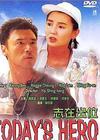"万世千秋" can be translated into English as "all future generations" or "for thousands of years." This phrase is often used to describe something that will last for a very long time, emphasizing its enduring and timeless nature.
Pope Julian II, in order to maintain the exalted status of the Papacy, was constantly warring with the kings of various European countries. At the same time, Julian, in his desire to glorify God, initiated large-scale construction projects and built St. Peter's Basilica in Rome. He also invited Michelangelo, a renowned sculptor of the time, to design the stone statues for his tomb. Julian was shrewd, authoritative, and good at recognizing talent. When he noticed that the interior of the Sistine Chapel was old and monotonous, he asked Michelangelo, who was then working on sculptures, to paint the images of the Twelve Apostles on its walls.
Michelangelo, known for his strong, determined, and steadfast character, reluctantly gave in to the pressure from the Pope but did not agree with painting the images of twelve giants. Inspired by an incident where a tavern owner immediately smashed a barrel of sour wine, letting it spill all over the floor, Michelangelo destroyed the apostle paintings he had already completed. He resolved to start anew.




